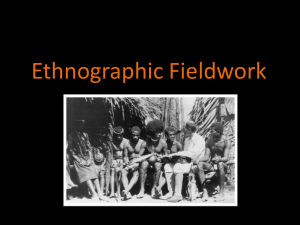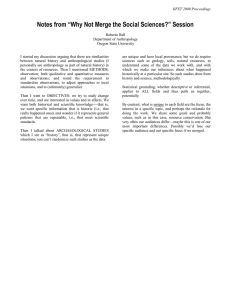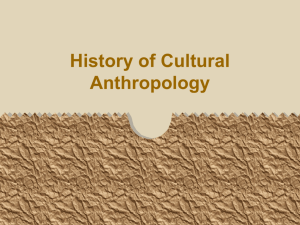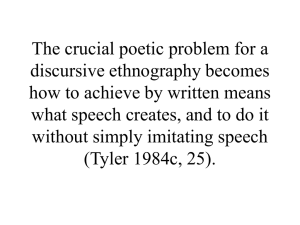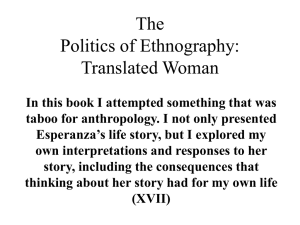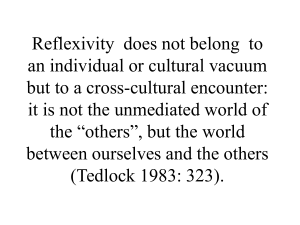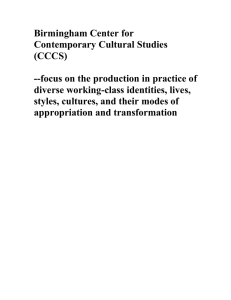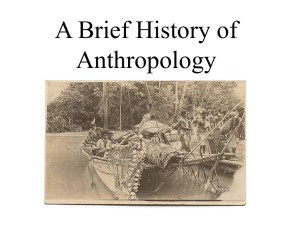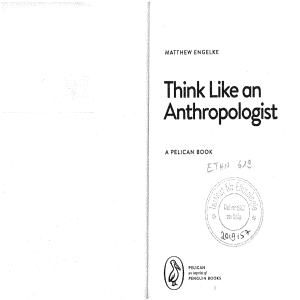Doing Ethnography: Cultural Anthropology Research Methods Part III
advertisement
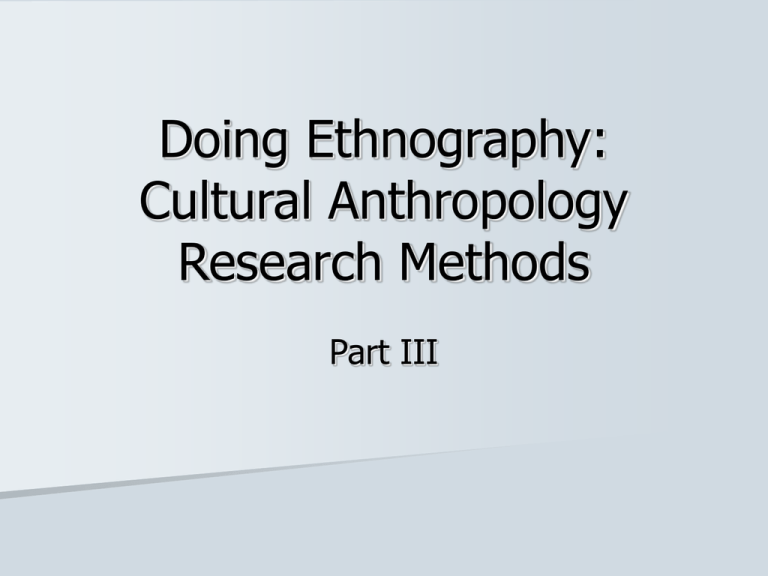
Doing Ethnography: Cultural Anthropology Research Methods Part III Ethnographic Tools and Aids: Anthropology is unique among the sciences in that a human being is the major research instrument, and other human beings supply most of the data. A key consultant is a member of the society being studied, who provides information that helps researchers understand the meaning of what they observe. Data Gathering: The Ethnographer’s Approach Quantitative data consists of statistical or measurable information, such as demographic composition, the types and quantities of crops grown, or the ratio of spouses born and raised within or outside the community. Qualitative data concerns non-statistical information such as personal life stories and customary beliefs and practices. Data Collection: Taking surveys Interviewing: – Informal interviews are unstructured, openended conversations in everyday life. – Formal interviews are structured question/answer sessions carefully notated as it occurs and based on prepared questions. Data Collection (cont.): Eliciting devices are activities and/or objects used to draw out individuals and encourage them to recall and share information. Mapping culturally relevant geographic features in the landscape inhibited by the people they study is something that the anthropologist, rather than a cartographer, would need to do. Data Collection (cont.): Photographing and Filming is a part of most anthropological research – still shots: Franz Boas in the early 1880s – motion picture cameras in 1894 – portable video cameras in 1960 Photographs and film are used in varying ways, to aid in both the research process as well as the relying of information postresearch.
